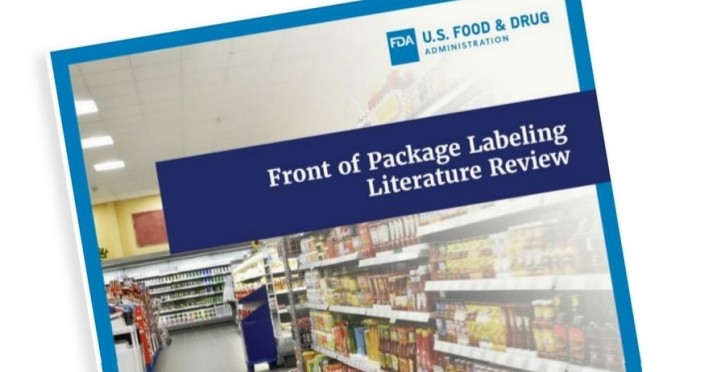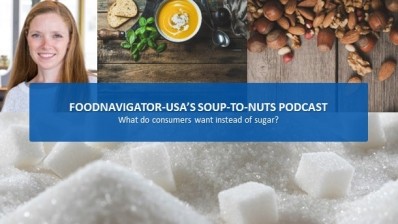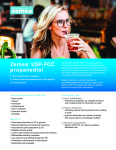Limiting front-of-pack nutrition labeling to added sugar, saturated fat & sodium could skew potential health impact, stakeholders tell FDA

Echoing the sentiment of many stakeholders from across the value chain gathered virtually Nov. 16, Frances Fleming-Milici, director of marketing initiatives for the Rudd Center for Food Policy & Health, voiced her support for front of package nutrition labeling, which FDA is exploring as part of the White House’s National Strategy to end hunger and increase healthy eating and physical activity by 2030.
Beginning in 2022 with focus group research that was followed by an experimental study and additional focus group research in 2023, the FDA is testing how best to provide at-a-glance nutrition information, potentially including levels of added sugar, saturated fat and sodium, on the front of packs to help consumers “quickly and easily identify foods that can help them build a healthy eating pattern,” according to the agency.
Fleming-Milici said at the public meeting that the Rudd Center for Food Policy & Health believes FOP labeling can “effectively communicate information about a food’s nutrient content, if it contains nutrients of concern and is standardized in color and location is mandatory and contains a graphic component.” But, she also warned of “unintentional negative consequences.”
Specifically, she cautioned, “FDA strategies to reduce added sugar consumption coupled with mandatory front of package disclosures on products high in added sugar will likely result in reformation … and in increase of non-nutritive sweeteners in foods and beverages.”
Of particular concern, said Fleming-Milici, “is how this impacts children.”
She explained that “experts” recommend against children’s consumption of non-nutritive sweeteners, and yet “among children in the US over 20% … aged two to five consume non-nutritive sweeteners in the foods they eat.”
She added, “there is a potential for this number to rise” if added sugar is included in mandatory front-of-pack labeling and manufacturers reformulate with alternative sweeteners to reduce sugar levels and obtain labeling that appears healthier to consumers.
‘We urge the FDA to [add] disclosures about non-nutritive sweeteners to foods’
For support, she pointed to Chile where a front of packaging warning label was adopted for added sugar but not for non-nutritive sweeteners and where, she said, “there has been an increase in the presence and consumption of non-nutritive sweeteners in beverages, yogurts and other products consumed by children.”
She added a similar trend is already happening in the US, where, for example, 16 of the 21 products and flavors offered by Capri Sun in 2022 included non-nutritive sweeteners to help lower overall added sugar content.
“Therefore, we urge the FDA to consider in the near term the importance of adding disclosures about non-nutritive sweeteners to foods and beverages to avoid unintentional negative consequences of policy change,” she said.
Fleming-Milici added that recently published research by The Rudd Center for Food Policy and Health shows FOP disclosures of added sugar and non-nutritive sweeteners significantly increased parents’ ability to identify these in products.
Stakeholders advocate for additional nutritional information on FOP
Several stakeholders at the meeting also urged FDA to include calories and other nutrients of interest on FOP labeling.
Calories were included in potential schemes tested by FDA in focus groups in 2022, but appear to have been dropped by the agency in its experimental study this year, based on data presented at the meeting. The schemes tested this year zeroed in on the amount of saturated fat, sodium and added sugar both as a percentage of daily value per serving and with a characterization of low, medium or high along with green, yellow and red traffic light color coding.
“We believe meaningful discussion on consumer guidance must include calories,” argued FMI – The Food Industry Association at the meeting.
“Calories are prominently bold in the updated Nutrition Facts label and required on menu labeling and vending. Yet, none of the front-of-pack schemes tested has calories included,” said Krystal Register, senior director of health and wellbeing at FMI, which co-created the Facts Up Front voluntary labeling program, which is widely used and includes calories.
The Consumer Brands Association agreed that FDA should test calories in FOP schemes “as research has shown that calories are what consumers look for most often on nutrition labels,” and FDA’s “stated goal to reduce diet related chronic disease can best be achieved by giving consumers calorie information as part of any FOP scheme,” Sarah Brandmeier, director, regulatory and technical affairs at Consumer Brands Association, said at the meeting.
She also noted, “a calories icon would provide a relevant practical option for small packages where complete FOP graphic is not feasible.”
Including calories also would better align with regulatory requirements for products sold in vending machines – as would creating alternative designs for smaller pack sizes, like those sold in vending machines or as “treats,” added Farida Mohamedshah on behalf of the National Confectioners Association.
Mohamedshah explained that many confectionery products are sold in smaller portion packet sizes to help consumers manage sugar intake, which “raises space concerns to accommodate the required FOP labeling. Therefore, we urge the agency to consider the application of FOP on small packs and in these cases offer alternatives to provide this information.”
Stakeholders disagree on which nutrients to spotlight
While FDA focused on saturated fat, sodium and added sugar in its most recent round of tests for FOP labeling, not all stakeholders agree those are the best choices.
For example, CBA’s Brandmeier advocated for a more “holistic approach to the labeling for a food nutritional profile, including addressing both positive nutrients and nutrients to limit – allowing consumers to make more informed choices bases upon the total nutrient contributions of a food.”
She argued, “an exclusive focus on nutrients to limit will not help consumers identify the better or more nutrient dense choice.”
Kris Sollid from the International Food Information Council also advocated for adding fiber to the front of package labeling, as was considered by FDA in its 2022 research.
Based on IFIC’s research, Sollid said, “including calorie and fiber information in FOP schemes also helped more people correctly identify the least healthy choice” as well as correctly identity the healthiest choice.
Next steps
The public meeting was just one of many ways that FDA has engaged with stakeholders in recent year about FOP labeling, and it is committed to ongoing engagement on the topic.
It recently included in its Unified Agenda adding a proposed rule on FOP labeling, but the specific timeline for this step is unclear, according to Robin McKinnon, senior advisor for nutrition policy, Center for Food Safety and Applied Nutrition at FDA.
She explained at the Reagan-Udall meeting that the timeline for publishing the proposed rule is “dependent on a number of factors,” but she assured attendees, “this work remains a very high priority for us.”





















